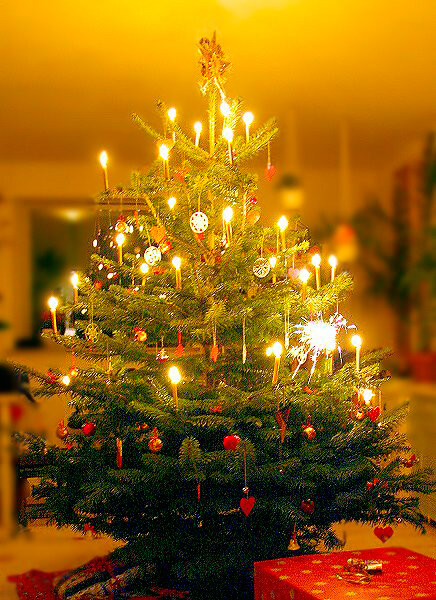Lights in the Darkness

Holiday decorations, like most things in life, can kill you.
Holiday decorations, like most things in life, can kill you.
There are, apparently, something in the area of 20-30 major holidays that get celebrated world-wide in December, not even including those like Ramadan which rotate around the Gregorian Calendar. Ours being a world where the civilizations of the Northern hemisphere have done the most to shape culture, these are sometimes group together as the “winter holidays” and most of them share two defining features: they venerate light, and they call for decorations which can be seen from outdoors. Christmas, Hanukah, Kwanza and others represent, at least in part, our efforts to push back the darkness of the longest nights of the year by filing our worlds with lights and cheer, and so it shouldn’t be surprising that these holidays are marked with spikes in seasonally-themed trauma.
Here’s two of the Christmas injuries that emergency departments are used to seeing which are quite likely to figure into your games during their holiday seasons.
Falls are a danger in any season, and it’s well known that risks of fall-related trauma are higher during the winter because snow and ice – and even just increased rain, in places that don’t see snow – make the ground more treacherous. There’s one sure-fire way to increase the risk of dangerous falls: give people a reason to climb up higher. A study out of Canada looked at ten years of data from a trauma center and identified forty cases of “severe” injury (meaning, those resulting in important impairment, real risk of death, or requiring surgical intervention) due to falling specifically while hanging Christmas lights. Thirty-eight of these were men, and the majority had fallen off of a ladder or a roof. Their conclusion was that, although not super-common, falls while hanging Christmas lights constituted an important health hazard capable of causing life-threatening injuries and that hanging lights should be considered a dangerous activity. This danger is probably less in most medieval settings, where the average home is probably only one storey high (although even a ten-foot fall can be deadly with the wrong luck), but falling from the roofs of monasteries and cathedrals is probably a real cause of morbidity and mortality for young clerics of religions that require outdoor decorations.
Another study out of Switzerland shows us the danger of festivals of light in particular. In the modern era, of course, Christmas lights tend to be electric, so while there’s a risk of shock, there’s less risk of actively burning down a home. A number of parts of the world still have traditions of putting lit candles into their trees, wreaths, and other holiday decorations, which is probably still the tradition in any medieval festival of light (unless magic is common enough that the average household uses magical lights). In Switzerland, burning trees – and, as a result, homes – is a real cause of burns and deaths. Over a forty-year period in Switzerland, there were 28 known cases of severe burns due to Christmas tree fires. This, of course, doesn’t take into account an unknown number of burns that don’t require hospital admission, or fires causing only property damage without injury, or fires that kill everyone in the home so the source isn’t identified. Interestingly, the majority of these fires occurred, not in December, but in early January, possibly because people stop paying as close attention after the holiday period is over. The authors noted that while decoration-associated fires were uncommon, they tended to cause more severe injuries than other fires, and that the government should issue warning pamphlets to inform the public. If this is a problem in the modern era, one has to imagine that it might be an even bigger danger in the medieval period, when more decorations involved active flame and home were more likely to be made out of little more than dry tinder and kindling.
More than four years ago, Dr. Eris Lis, M.D., began writing a series of brilliant and informative posts on RPGs through the eyes of a medical professional, and this is the one that appeared here on December 27, 2015. Lis is a physician, gamer, and author of the Skirmisher Publishing LLC OGL sourcebook Insults & Injuries, which is also available for the Pathfinder RPG system.






